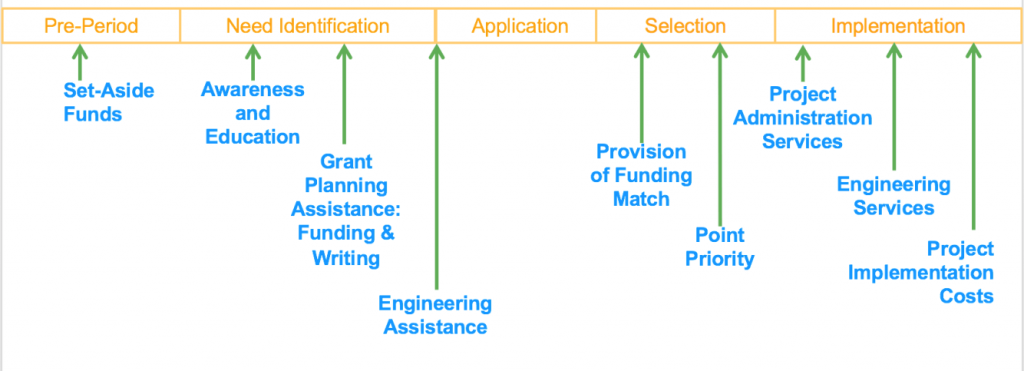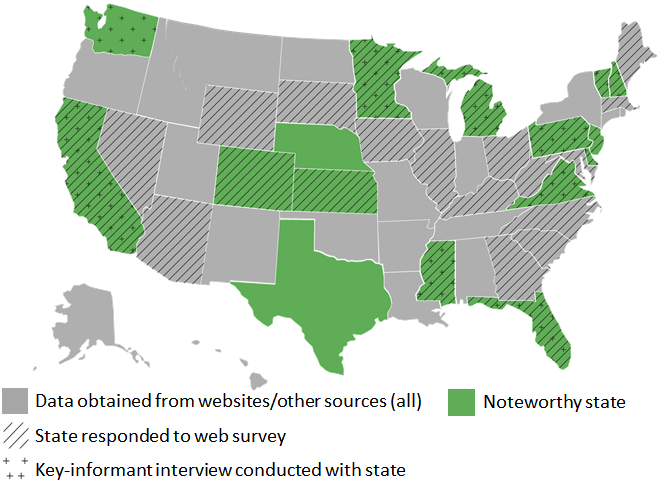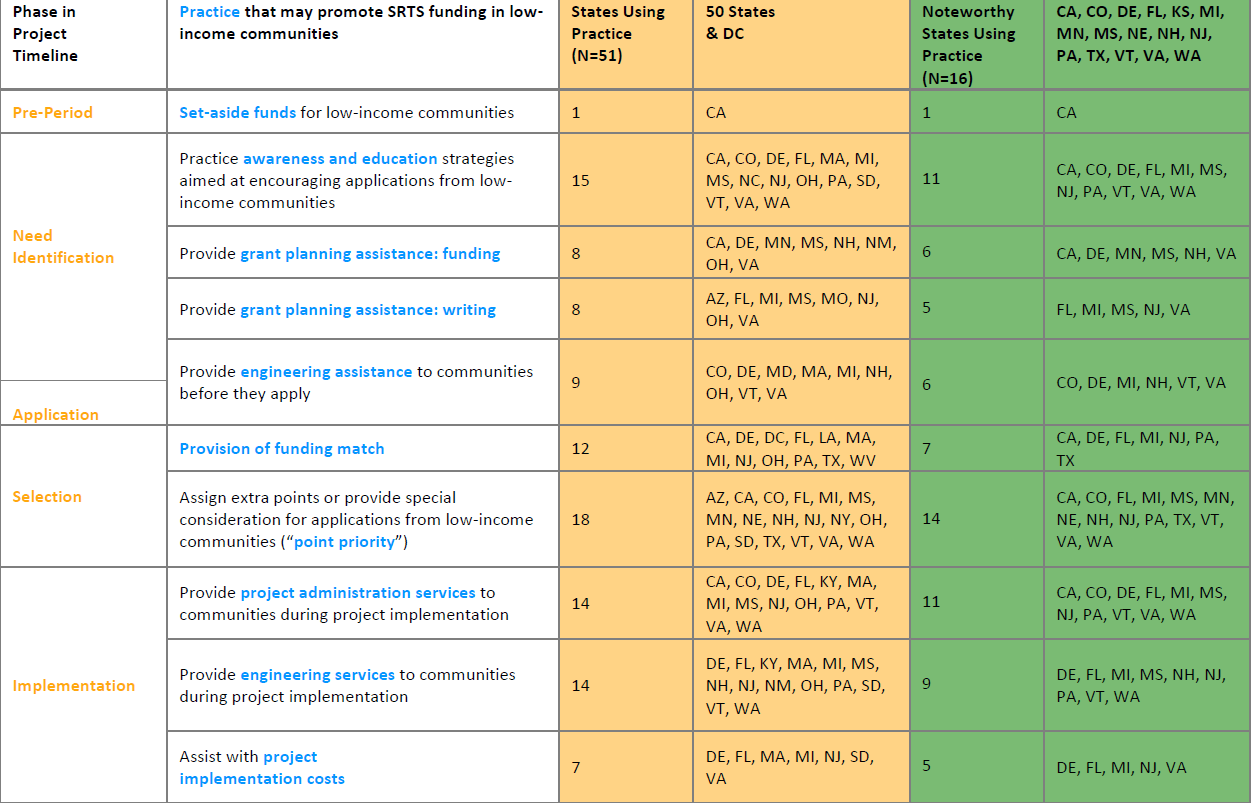Applying for and implementing a federally-funded Safe Routes to School (SRTS) award can be particularly challenging for low-income communities in need of safe and active transportation programming. SRTS programs in multiple states have adopted several approaches to reduce barriers faced by schools in low-income communities, which span the project timeline from planning to implementation (Figure 1). Given the differences in state programs and policies, this study aimed to determine which of these practices for equitable funding were successful in promoting SRTS implementation within vulnerable communities.

The Study
To assess state practices, researchers collected award data (years 2005-2015) from the National Center for Safe Routes to School State Project List, sent web-based surveys to individual state-level respondents, and conducted follow-up interviews with a sample of state coordinators. State program and legislative websites were also reviewed. In total, 28 states responded to the survey and 11 states participated in follow-up interviews.

Defining Noteworthy States
Several states reported using a number of practices for equitable distribution of funds, though researchers identified 16 states as “noteworthy” as they reported using a number of practices for equitable distribution of funds, or awarded projects to low-income schools at a rate higher than expected during more than one funding cycle (Figure 2).
Defining Vulnerable Communities
Researchers learned that states’ SRTS programs define “vulnerable” or “low-income communities” using many different standards, such as criteria set by other state agencies or local jurisdictions. Therefore, this analysis may have missed certain states that could be classified as “noteworthy” based on their state’s definition of vulnerable communities.
Practices for Equitable Funding
Many states have chosen one or more practices that may promote funding in low-income communities. Table 1 provides an overview of practices used by states and noteworthy states, listed by the phase in which they occur during the funding process.
View the Full Report
Table 1: Practices for Equitable Funding

Discussion & Policy Implications
- Awareness and education, provision of funding match, point priority, project administration services, and engineering services were the identified practices most frequently reported by states that were successful in funding low-income communities.
- The most frequently employed practice among states that funded low-income schools at a rate higher than expected in one or more funding cycle was the point priority.
- This study suggests that multiple practices can help ensure that low-income schools and communities are encouraged to apply for awards, that these applications have a likelihood of success, and that implementation of projects in low-income communities receive project administrative and engineering support and services.
Although states no longer receive federal set-aside funding for SRTS projects and programs, some states have taken steps to institutionalize the SRTS program in their DOT’s, integrating a focus on low-income or disadvantaged communities. All states will need to identify new solutions to secure ongoing funding and institute key practices to ensure that more students can walk or bicycle to and from school safely, particularly in vulnerable communities.
This page is intended to provide a summary of findings from:
Cradock AL, Barrett JL, Wei E, Otis B, Pipito A. Examining Practices that Promote Access to Safe Routes to School Programs in Vulnerable Communities. Harvard Prevention Research Center on Nutrition and Physical Activity at the Harvard T.H. Chan School of Public Health, Boston, MA; January 2017.
This work was supported by a grant from Healthy Eating Research, a national program of The Robert Wood Johnson Foundation (Grant #210443). The content is solely the responsibility of the authors and does not necessarily represent the official views of Healthy Eating Research or The Robert Wood Johnson Foundation.
Peer review was provided by Brian Saelens, PhD, Seattle Children’s Research Institute and the University of Washington, and Seth LaJeunesse, Associate Director, National Center for Safe Routes to School.